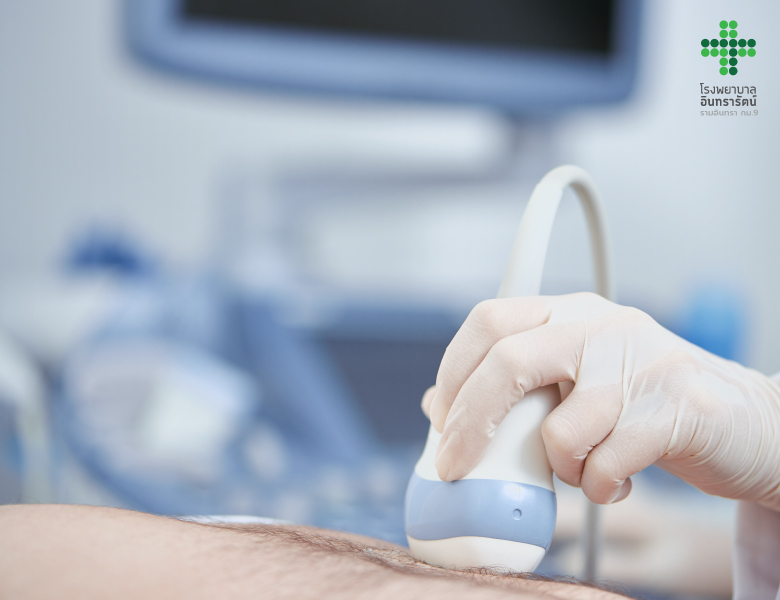
Ultrasound
09/10/2567 10:18:45 | Views: 2,783What is an abdominal ultrasound?
An abdominal ultrasound is a type of imaging test. It uses high-frequency sound waves to create pictures of the organs and blood vessels in your belly (abdomen).
Why would a doctor order an abdominal ultrasound?
There are several reasons why a healthcare provider may recommend an abdominal ultrasound. One of the most common is to check on a developing fetus throughout pregnancy. Providers often call this test a prenatal ultrasound.
Ultrasound can also check parts of your digestive system, including your:
- Liver
- Pancreas
- Gallbladder
A complete abdominal ultrasound examines those three organs, as well as your:
- Abdominal blood vessels like your aorta and inferior vena cava.
- Spleen
- Kidneys
- Bladder
What can an abdominal ultrasound detect?
Abdominal ultrasound may also help pinpoint the cause of unexplained abdomen (stomach) pain. It can help diagnose conditions, as well, like:
- Abdominal aortic aneurysm (enlargement of your abdominal aorta).
- Kidney stones.
- Kidney cancer.
- Bladder stones.
- Gallstones
- Cholecystitis (gallbladder inflammation).
- Liver disease.
- Kidney disease.
- Pancreatitis
- Enlarged spleen.
- Abdominal cysts or tumors.
- Fatty liver disease.
- Certain types of cancer (like pancreatic cancer).
Ultrasound of the upper abdomen (Upper Abdominal Ultrasound) is an examination of the upper abdominal organs above the navel, including the liver, spleen, gallbladder, bile duct, kidneys and aorta, pancreas (in some cases, only some are visible) to see if there are any abnormalities, such as kidney stones, gallstones, tumors in the liver, kidneys, etc. Both men and women can be examined.
Ultrasound of the lower abdomen (Lower Abdominal Ultrasound) is an examination of the organs of the lower abdomen below the navel, including the uterus, ovaries (women), prostate gland (men), bladder and other lower abdominal areas to see if there are any abnormalities, such as uterine tumors, ovarian tumors/cysts, prostate gland size (men), bladder stones and tumors.
Lower abdominal ultrasound is often performed on women aged 30 and over, or those who have regular menstrual pain or irregular heavy and light menstrual periods.
How does an abdominal ultrasound work?
Ultrasound uses sound waves you can’t hear to take pictures of soft tissues inside your body. To capture these images, a provider glides a handheld wand (transducer) over your abdomen.
The ultrasound machine sends out high-frequency sound waves that bounce off structures like organs, blood vessels and other soft tissues. A computer receives these signals and uses them to create pictures.
How long do abdominal ultrasounds take?
On average, an abdominal ultrasound usually takes 30 minutes to complete. But it could take more or less time depending on your situation.

By

Article
Breast Cancer Surgery
- More
- 23/02/2567 14:00:52
Ultrasound
Diagnostic test using high-powered sound waves to create images that can examine various organs and reveal certain abnormalities.
- More
- 09/10/2567 10:18:45
Package
Total Knee Arthroplasty (TKA)
- More
- 10/02/2568 12:24:52
Hyaluronic acid knee injection (viscosupplementation knee injection)
- More
- 06/02/2568 12:09:01
Copyright @ 2021. All Rights Reserved By Intrarat Hospital


